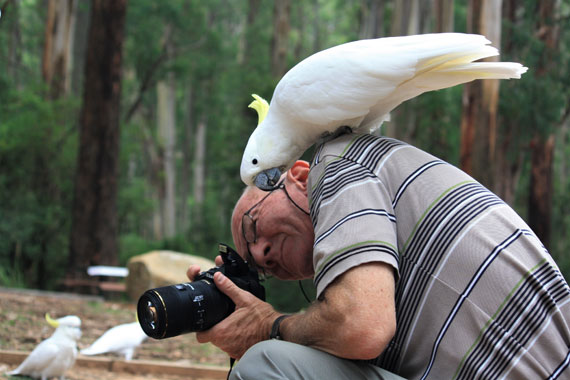Usually, when photographers talk about long exposures they mean that the shutter is open for longer than can easily be hand held, though it’s surely not as simple a definition as that.
The first rule of thumb for a hand-holdable shot—the focal length reciprocal rule:
If your focal length is 30mm, then you should be able to hand hold a camera with a 1/30 of a second shutter speed. By hand hold, this just means that you should realistically be able to depress the shutter and keep the camera from shaking so much that it shows up as a blurry photo from camera movement.
The reciprocal rule assumes that the subject is relatively still. Posed. This rule works especially well with objects that tend not to move, and inanimate human beings that tend not to move or talk. If you were shooting with a lens of focal length 300mm, then you’ll see that you need at least 1/300 of a second. And you will notice, I hope, that the longer the lens, the more the image dances around in the viewfinder.
Which brings us to the usefulness of placing the camera on a steady surface, especially when shooting with longer lenses. And if you can’t put it on a steady surface, and you can’t use a tripod, then the best you can do is press the camera against your eye and forehead and have the camera strap at a good length so that it can also act as a sort of triangular brace from shoulder to camera.
So right away, the idea of “long exposure” is related to your intentions. If you are using a long lens, and you can’t achieve a shutter speed that is the reciprocal of the focal length, and you don’t have anything to rest the camera on. It’s a long exposure; unless, of course, you want to have camera shake in the final image.
Image Stabilization (IS) is a great thing. I have it on the Canon 70-300mm lens, and it can easily save me one or two stops. By that I mean that if the focal length is 300mm, I can shoot at 1/125 of a second, or even 1/60 without getting camera shake. And as soon as that shutter button is halfway depressed, and IS is turned on, I can see through the viewfinder that camera shake is almost gone.
As mentioned, stabilization has no effect on objects that are moving. And frankly, this is something that takes some experience and testing to learn about. For example, I’ve noticed that a figure that cuts quickly across the plane—say from left to right—is almost certainly going to blurred with a shutter speed of less than 1/250 of a second, no matter how steady the camera is. But even here, this depends on the lens. At least it seems that way to me.
The figure moving from left to right at a constant speed will be blurred differently depending on the focal length. This is something I can’t swear to, but it does seem that way, though it may only be due to the relative size of the figure in the frame.
Nevertheless, I think this covers the major points of what constitutes a long exposure, but it doesn’t get to what the reader would expect to read about under this exposure: “the really long exposure.” What, for example, is the difference between an exposure of one minute, and an exposure of five minutes?
With film, for example, there is the concept of reciprocity. Film reciprocity? What the heck is that, and why should you care?
If by any chance you are shooting film, most films will say that after a certain amount of time, reciprocity sets in. That’s not a disease. It just means that the amount of exposure decreases according to a certain curve that is particular to that film after a certain amount of time. Shooting Tri-X for example (once a well-known film) the amount of exposure that you get after ten minutes is not ten times as much as what you got with one minute.
Ah, it’s a long subject with many a twist and turn. Let me chat about the long, long exposure as it applies to digital shots in the next post.
About the Author:
Dave Beckerman is a black and white photographer in New York. He has been working as a professional fine art photographer for the last 10 years. Before that, it was an avocation.
- - - - - - - - - - - - - - - - - - - - - - - - - - - - - - - - - - - - - - - - - - - - - - - - - - - - - - - - - - - - - - - - - - - - - - - - - -
Did you appreciate this newsletter? Please help us keep it going by Joining Our Patreon Supporters
What are your thoughts on this article? Join the discussion on our Facebook Page
PictureCorrect subscribers can also learn more today with our #1 bestseller: The Photography Tutorial eBook
- - - - - - - - - - - - - - - - - - - - - - - - - - - - - - - - - - - - - - - - - - - - - - - - - - - - - - - - - - - - - - - - - - - - - - - - - -
The post What Is a Long Exposure in Photography? appeared first in the Photography Tips category on PictureCorrect.
from PictureCorrect https://ift.tt/WdCYH4i
via IFTTT







0 kommenttia:
Lähetä kommentti